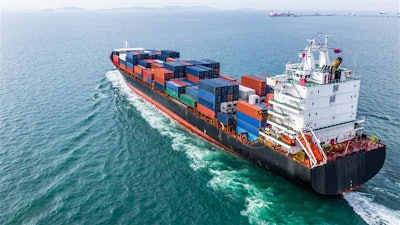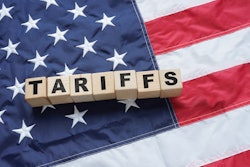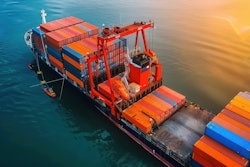
This month’s ITS Logistics US Port/Rail Ramp Freight Index, presented by ITS Logistics, reveals that frontloading continued through March, with the expectation that the industry should see strong import volumes through April as containers with front-loaded inventory, which was loaded by April 9, reach the United States.
In addition, throughout May and possibly into June, import and export volumes should see a cliff event similar to the impacts felt during the immediate COVID response.
“This cliff event is set to occur as excess frontloaded inventory is utilized and shippers stall sourcing efforts until they have a clearer understanding of where and how they can minimize the tariff cost impacts on their goods,” says Paul Brashier, VP of global supply chain for ITS Logistics. “Industry professionals can also expect trucking capacity, available container storage, terminal congestion, and chassis availability to tighten through April as frontloaded inventory is absorbed into the U.S. supply chains. Ports and ocean carriers not servicing export shippers are already experiencing similar empty termination issues as seen in the post-pandemic era.”
Key takeaways:
· CNBC reported that the frontloading of imports into the U.S. economy directly corresponds to a steep decline in new freight order activity in every region across the U.S. and a steep quarterly decline in Chinese freight volumes. This news comes as uncertainty around consumer demand grows.
· In addition, cross-border volumes from the Toronto market to the Chicago market were up over 50%, with rates also experiencing an increase of around 10%. Critical expedited shipments were 50% higher in some cases, with many truck drivers being paid to run empty from the U.S. to return to a position that enables them to meet the surging demand coming out of Canada into the United States.
· On April 2, the Trump Administration implemented numerous new reciprocal tariffs on dozens of American trade partners with the goal to restore fairness and boost American manufacturing. Yesterday, the Trump Administration temporarily reduced all reciprocal tariffs to 10% for 90 days, with the exception of China, which was elevated to 125% effective immediately.
· In the meantime, industry professionals are advised to transload or use coastal distribution centers to process imports to avoid rail legs for urgently needed goods. Rail ramps will continue to experience congestion, but because most of the volume is excess inventory from frontloading, it should not adversely affect supply chains.





















